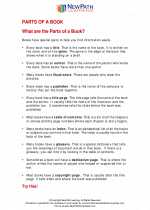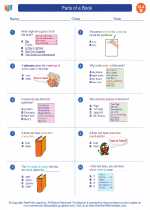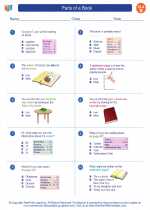Parts of a Book
In order to understand how to navigate a book, it's important to know the different parts of a book. Each part serves a specific purpose and helps the reader engage with the content in different ways.
1. Cover
The cover of a book is the outermost part that protects the pages inside. It often includes the title, author's name, and sometimes an illustration or image related to the book's content.
2. Spine
The spine is the part of the book that connects the front and back covers. It usually displays the title and author's name, making it easy to identify the book when it's on a shelf.
3. Title Page
The title page is found at the beginning of the book and includes the title, author's name, and sometimes the publisher's information. It provides the reader with essential details about the book.
4. Table of Contents
The table of contents lists the chapters or sections of the book along with the page numbers where they can be found. It helps the reader locate specific content within the book.
5. Chapters/Sections
Most books are divided into chapters or sections, each focusing on a particular aspect of the book's content. This division helps organize the information and makes it easier for the reader to follow the narrative or structure of the book.
6. Glossary
A glossary is a list of terms and their definitions, often found at the end of a non-fiction book or a book with specialized vocabulary. It helps the reader understand and clarify any unfamiliar words used in the book.
7. Index
An index is an alphabetical list of topics and their corresponding page numbers, usually found at the end of the book. It serves as a quick reference guide for locating specific information within the book.
8. Acknowledgments
The acknowledgments section is where the author expresses gratitude to individuals or organizations who contributed to the creation of the book. It provides insight into the author's appreciation for those who supported the book's development.
9. About the Author
This section provides a brief biography of the author, including their background, accomplishments, and other works they have written. It gives the reader insight into the author's credentials and expertise.
10. Back Cover
The back cover often includes a brief summary of the book, reviews or endorsements, and sometimes an author bio or photo. It serves as a final enticement for the reader to engage with the book.
Study Guide
Now that you understand the different parts of a book, here are some study guide questions to help you engage with the content:
- Why is the cover of a book important?
- How does the table of contents help a reader?
- What is the purpose of the acknowledgments section in a book?
- Where can you find the author's biography in a book?
- Why is the index useful for readers?
Understanding the parts of a book and how they function can enhance your reading experience and help you navigate books more effectively.
[Parts Of A Book] Related Worksheets and Study Guides:
.◂English Language Arts Worksheets and Study Guides Second Grade. Parts of a Book

 Worksheet/Answer key
Worksheet/Answer key
 Worksheet/Answer key
Worksheet/Answer key
 Worksheet/Answer key
Worksheet/Answer key
